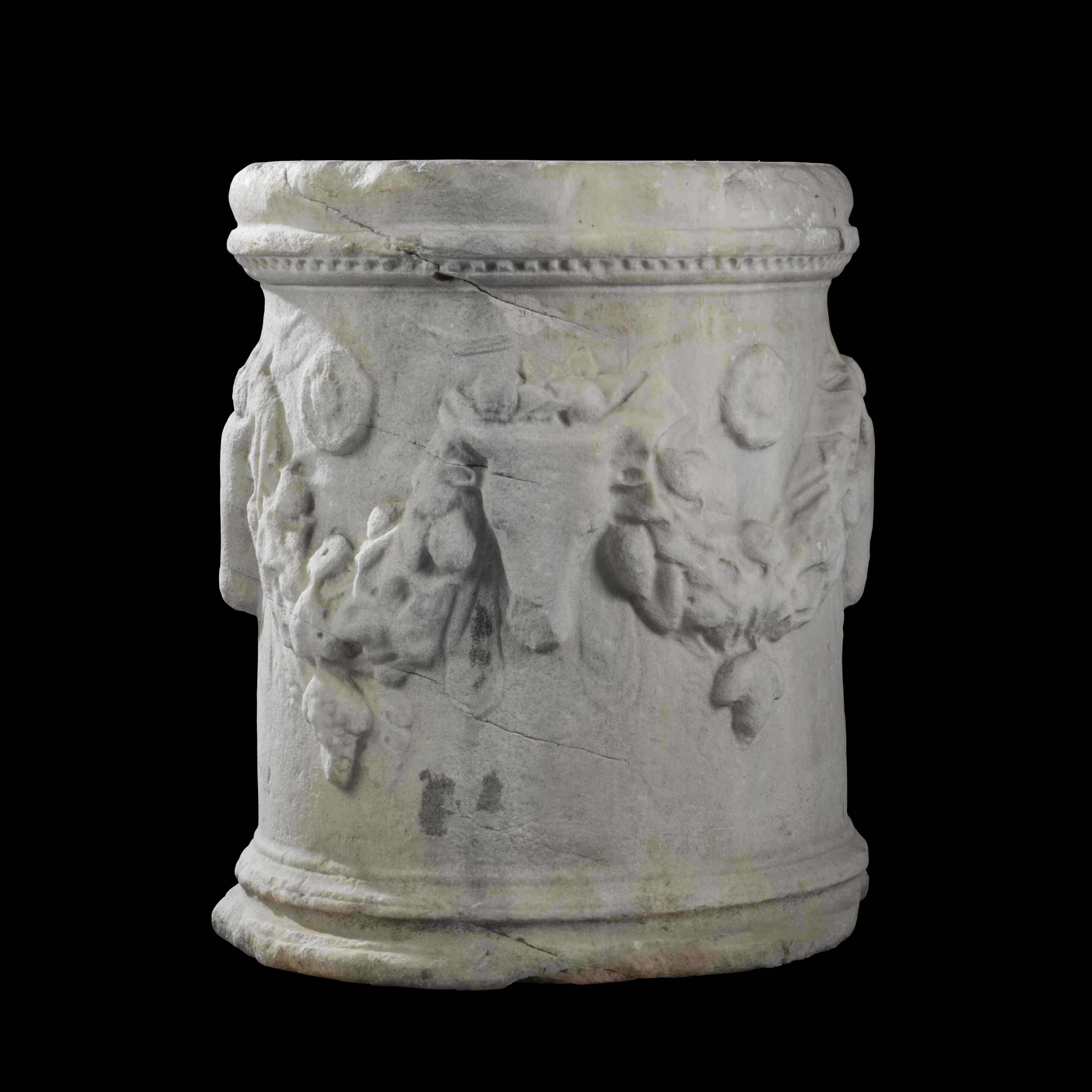Both exterior sides of this monumental cup are dominated by a large pair of eyes. The irises are composed of three rings in different colours – black and red-brown. The pupils are entirely purple with a fine drill hole in the centre. Slender, elegantly curved brows are located above the eyes. Side A shows, between the eyes, a nude youth (komast) holding a stick in his right hand, a mantle is thrown over his left arm; on side B the eyes, supplemented by a nose, are the main features of a face. The field between the eyes and the handles is filled with an upright palmette with seventeen leaves. A tendril emerges from between the volutes at the base of the palmette and curves upwards to the handles. A narrow, reserved band separates the ornamental zone from the black-glazed lower section of the cup. The squat foot with elegant profile is glazed black, except for the lower rim and the underside.
Note
This is a nice “standard eye-cup” of Class II in Beazley’s classification (ARV2 39), with a foot of type AY. The misfiring on a large part og the vase does not really affect it's masterfully drawing. It can be attributed to a circle of painters around the potters Nikosthenes and Hischylos, which included the painters Pheidippos, the Nikosthenes Painter, the Scheurleer Painter, the Winchester Painter, and the Bowdoin-Eye Painter.









